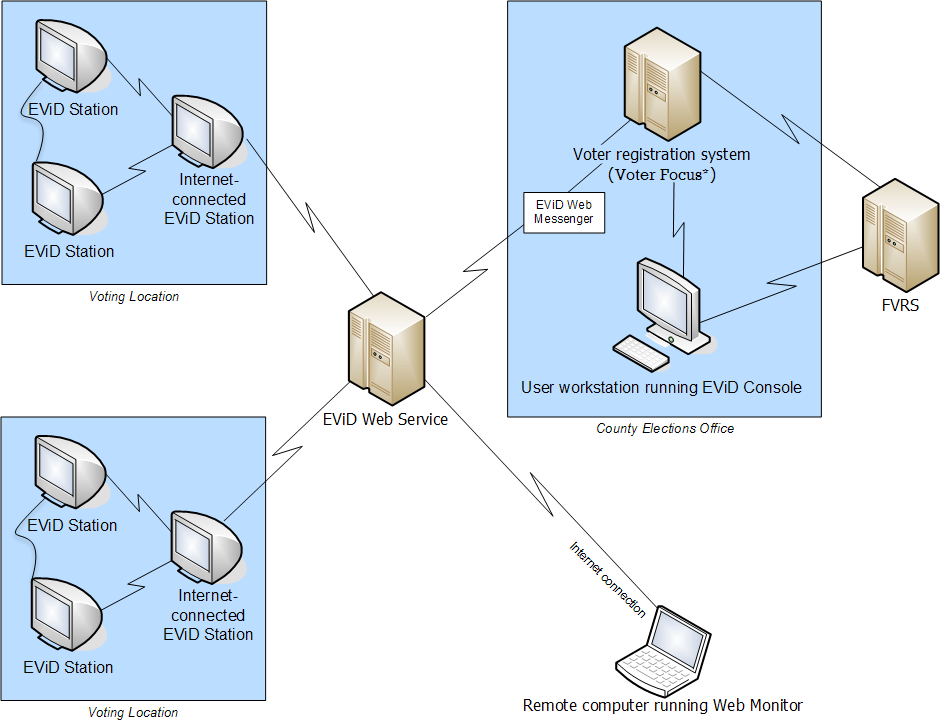
When talking about the way in which EViD stations communicate with your county server and the EViD website, it is useful to see how all the hardware pieces work together with the applications. Below is a diagram that details the basic way in which the individual EViD stations communicate with the other databases and servers.

Two applications must be running on your county server during early voting and on election day:
Web Messenger—Sends and receives transactions between the county's voter registration database and EViD stations at voting locations around the county. The transactions from the database flow from Web Messenger to the EViD Web Service to a version of Web Messenger running on Internet-connected EViD stations. Transactions from the EViD stations flow in the reverse direction. Web Messenger is also used to load voting location and EViD station information into Web Monitor prior to voting. Only one instance of Web Messenger should be running at the county.
Input Processor—Processes transactions received from EViD stations into county database records. This includes transactions received over the Internet via the Web Messenger program and those from QLogs processed after the voting day. Only one instance of Input Processor should be running at the county.
Note Both Web Messenger and Input Processor can detect if other instances are running and will prevent the running of multiple instances. However, security configurations on some networks can prevent the detection of multiple instances.
The individual EViD stations run three applications in the background to manage communications with the EViD website:
Input Processor: Processes the transactions received from the EViD website as well as other EViD stations on site.
Web Messenger: Communicates with the EViD website, sending and receiving transactions for the polling location. This application is active on the EViD station with an Internet connection, usually the Clerk mode EViD station.
EViD Messenger: Responsible for peer-to-peer communications between EViD stations at a polling location. For example, EViD Messenger ensures that the transaction where Mr. John Smith has been checked in on EViD station LEO1234 is sent to the other EViD stations in the polling location.
The EViD Web Monitor is used to view the real-time status of your county’s EViD stations.
From your county workstation, you will be running Voter Focus applications and exchanging data with the Florida Voter Registration System (FVRS).